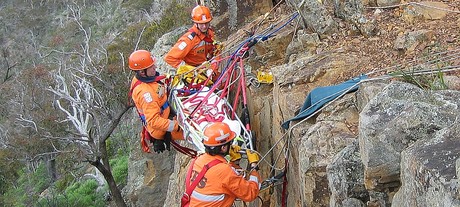Vic SES adopts cloud for mobile connectivity

The safety agency has adopted Microsoft Azure cloud services to keep staff and volunteers connected.
The Victoria State Emergency Service (Vic SES) is a not-for-profit, volunteer-based emergency service with 5000 volunteers operating out of 142 localities to help people facing floods, storms, landslides and road accidents across the state. Aiding the volunteers are 180 SES staff who provide support to those in the field.
When a major weather event occurs, the organisation can receive several thousand calls for assistance each day.
“Our role is to keep the community alerted, informed. Help them with keeping the water out of their homes, trees off their rooves, saving and looking after people generally,” said Andrew Ferrarese, manager of information services at Vic SES.
Given the nature of the job, Vic SES’s information systems need to be entirely reliable and always accessible.
In the past the organisation managed its own IT infrastructure, but Ferrarese recognised that by moving to a trusted public cloud he could not only support the organisation’s current needs, but better position it for the future.
Working with Microsoft partner Data#3, Vic SES has migrated 90% of its operational systems to Microsoft’s Azure cloud, with the balance to follow soon.
The local Microsoft data centres have been certified by the Australian Signals Directorate, delivering peace of mind regarding security and the privacy of stored data, and with latency and data sovereignty concerns no longer an issue.
Previously, staff needed a dedicated device and login details to access the Vic SES system. If they were in the field and attempted to log in from a Country Fire Association site or Department of Water and Environment office, only limited access was possible.
Now, the cloud and Office 365 enables anywhere, anytime access. Any staff member, any volunteer with internet access and the appropriate authority can access any application.
“What we’ve tried to do with this recent move is to just keep it as seamless as possible, so people still see their email and it looks the same, but it’s on Office 365,” said Ferrarese.
“The key for me is that I have that comfort knowing that it’s local, it’s accessible, there’s a business continuity component to it,” said Ferrarese.
“The business need is really around a dynamic organisation that has a lot of staff and volunteers out on the road attending to community needs when there’s a disaster or a declared operation, so we need to be flexible enough to be able to drive a lot of those needs through remote working or a BYOD type of solution,” added enterprise architect Paul Jones.
“We wanted something that was simple and easy to use and obviously cost was a key consideration,” said Ferrarese, adding that the service is saving 20–25% on its IT costs.
“Azure provided that ability where we didn’t need to worry about infrastructure or manage anything at a high cost and be worried about when it expires and licensing. We’re getting a better service for less money.”
Why P25 technology remains a good fit for public safety communications
Digital LMR technology ensures police officers, firefighters and emergency management teams can...
From past to present: leveraging satellite data for better disaster resilience
Whether monitoring flood-prone regions or assessing wildfire-prone landscapes, historical...
Lancashire Police adds in-car video to full vehicle fleet
Motorola Solutions' M500 in-car video solution observes a vehicle's environment from...





